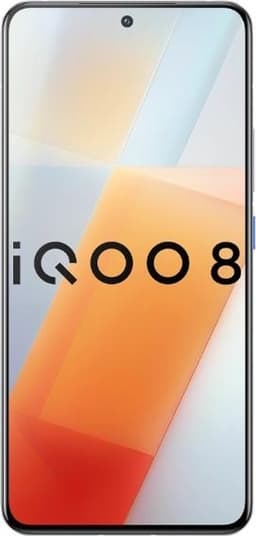- Archive
- vivo iQOO 8 vs Xiaomi Redmi Note 12 Pro+
vivo iQOO 8vsXiaomi Redmi Note 12 Pro+
We compare these two popular phones to help you decide which one fits your needs and budget better.

Quick Stats

Quick Stats
Note: Highlighted specifications show differences between the two devices.
| Metric | vivo iQOO 8 | Xiaomi Redmi Note 12 Pro+ |
|---|---|---|
| Connectivity | #439 | #34 Winner |
| Design | #284 Winner | #703 |
| Display | #189 Winner | #196 |
| Performance | #242 Winner | #410 |
| Battery | #349 Winner | #366 |
| Camera | #426 | #20 Winner |
Note: Lower rank number indicates a better position in category.
No significant specification differences found between these devices.
vivo iQOO 8
Strengths
Weaknesses
Xiaomi Redmi Note 12 Pro+
Strengths
Weaknesses
vivo iQOO 8
The Vivo IQOO 8 is an impressive flagship device that boasts a unique camera setup and sleek design. The phone's flat back, aluminum frame, and curved display give it a classy look that sets it apart from other smartphones. One of the standout features of the IQOO 8 is its camera capabilities. The phone's 50MP primary sensor takes excellent photos, with clear details and good low-light performance. The ultra-wide-angle lens adds flexibility to photography, while the video stabilizer provides smooth footage even during intense activities like jogging or running. The phone also features a range of camera modes, including night mode, portrait mode, and slow-motion capabilities. The 4K video recording is excellent, with minimal jitter and great color reproduction. In terms of performance, the IQOO 8 is a powerhouse, handling demanding games and tasks with ease. The gaming experience is enhanced by the phone's cooling system and optimized software. While the IQOO 8 has its strengths, it also has some drawbacks. The camera bump on the back can be slightly raised, which may not be ideal for everyone. Additionally, some of the camera features may feel overwhelming or unnecessary to users. Overall, the Vivo IQOO 8 is a solid flagship device that offers impressive performance, excellent cameras, and sleek design. While it may have some minor flaws, it's definitely worth considering for those in the market for a high-end smartphone.
Xiaomi Redmi Note 12 Pro+
The Xiaomi Redmi Note 12 Pro is one of the newest mid-range phones from Xiaomi. While there are many Redmi devices on the market, this model stands out with its more powerful chipset and stereo speakers compared to other non-Pro models. However, it lags behind the more expensive Pro Plus variant in terms of camera capabilities and charging speed. The phone's design is flat and glossy, making it prone to smudges. It has an IP53 rating for dust and water resistance. The 6.67-inch AMOLED display offers a 1080p resolution, 120Hz refresh rate, and Gorilla Glass 5 protection, although its maximum brightness is slightly lower than the Pro Plus. The camera setup includes a 50-megapixel primary sensor, an 8-megapixel ultra-wide camera, and a 2-megapixel macro camera. While the main camera produces excellent photos with great detail, low noise, high contrast, and punchy colors, it's not as good as the 200-megapixel camera on the Pro Plus variant. The phone runs MIUI 14 on top of Android 12, which brings some new features but is still similar to previous Xiaomi interfaces. The performance is satisfactory for multitasking and gaming, thanks to the Mediatek Dimensity 1080 chipset. The battery life is decent, with an endurance rating of 97 hours in our tests. Overall, the Redmi Note 12 Pro offers a solid mid-range experience with a great screen, decent camera capabilities, fast charging, and good performance. While it may not be perfect, it's definitely worth recommending for its price point.
Need help choosing?
Read our detailed reviews to understand which device is better for your specific needs and budget.
Compare other phones
Explore comparisons between any other phones
Choose two different items to see a detailed comparison of their specifications, performance, and features